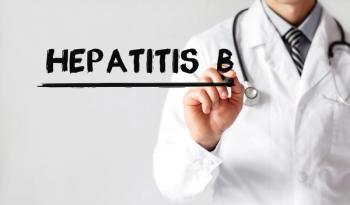
Early-Onset COPD Often Associated With Family History, Study Says
A study analyzed the personal and family history of patients who developed chronic obstructive pulmonary disease (COPD) before age 50.
Although the development of
Other research has shown that lung function declines swiftly in about half of patients with COPD who are current or former smokers, while the other half have a normal rate of lung function decline stemming from abnormal lung function beginning in early adulthood.
The current study sought to illustrate the characteristics of COPD when it develops prior to the age of 50. The study,
Overall, researchers found 6 independent characteristics associated with early COPD occurrence, including family history with respiratory events, past personal history or hospitalization at a young age due to respiratory events, symptoms, cumulative smoking exposure in pack-years, low diffusing capacity, and unemployment.
Those with COPD reported that their parents had respiratory conditions in a higher proportion than those without COPD, with the most common conditions being maternal and paternal bronchitis and maternal cardiac disease.
Additionally, 12% reported being hospitalized before the age of 5 years for respiratory reasons, compared with 3% from the control group (P <.009).
Individuals with COPD also had higher proportions of chronic bronchitis than those without (25.84% vs 10.15%, P = .00112) and were significantly more likely to have a diagnosed respiratory disease, such as asthma, and use medications to treat those conditions.
Only 46% of individuals (36 out of 78) with a previous diagnosis for COPD reported regular use of over-the-counter respiratory medications. Those who had undiagnosed COPD were referred to a health care provider for treatment.
Many in the control group had normal spirometry but still had structural and functional abnormalities seen in patients with COPD, such as mid-expiratory airflow characterized by a forced expiratory flow at 25%-75% of FVC, which was reduced in both groups (39.2±30.9% ref. vs 92.6±35.5% ref., P <.0001).
There was also evidence of lung damage in both groups: 231 of the participants had CAT scans of the thorax, and emphysema was seen in 61% of patients with COPD and 32% of those without (P <.001),
“In any case, this observation confirms that smokers with normal spirometry may have emphysema and strengthens the need for a careful reconsideration of the diagnosis and taxonomy of COPD,” noted researchers in the report.
Researchers said that some factors associated with early COPD, such as early-life events and smoking exposure, may actually be risk factors, whereas symptoms, reduced lung diffusion, and unemployment may be considered to be consequences of COPD.
“Collectively, these observations contribute to a better understanding of early COPD and may open novel opportunities for prevention and treatment of the disease,” the authors said in the study.
Also, researchers said that these factors contribute to a better comprehension of phenotypic characteristics of early COPD and could aid in determining which young smokers are more likely to be at risk of developing the disease.
Reference
Cosío BG, Pascual-Guardia S, Borras-Santos A, et al. Phenotypic characterisation of early COPD: a prospective case–control study. ERJ Open Res. 2020; 6(4):1-13. doi: 10.1183/23120541.00047-2020.
Newsletter
Stay ahead of policy, cost, and value—subscribe to AJMC for expert insights at the intersection of clinical care and health economics.













































